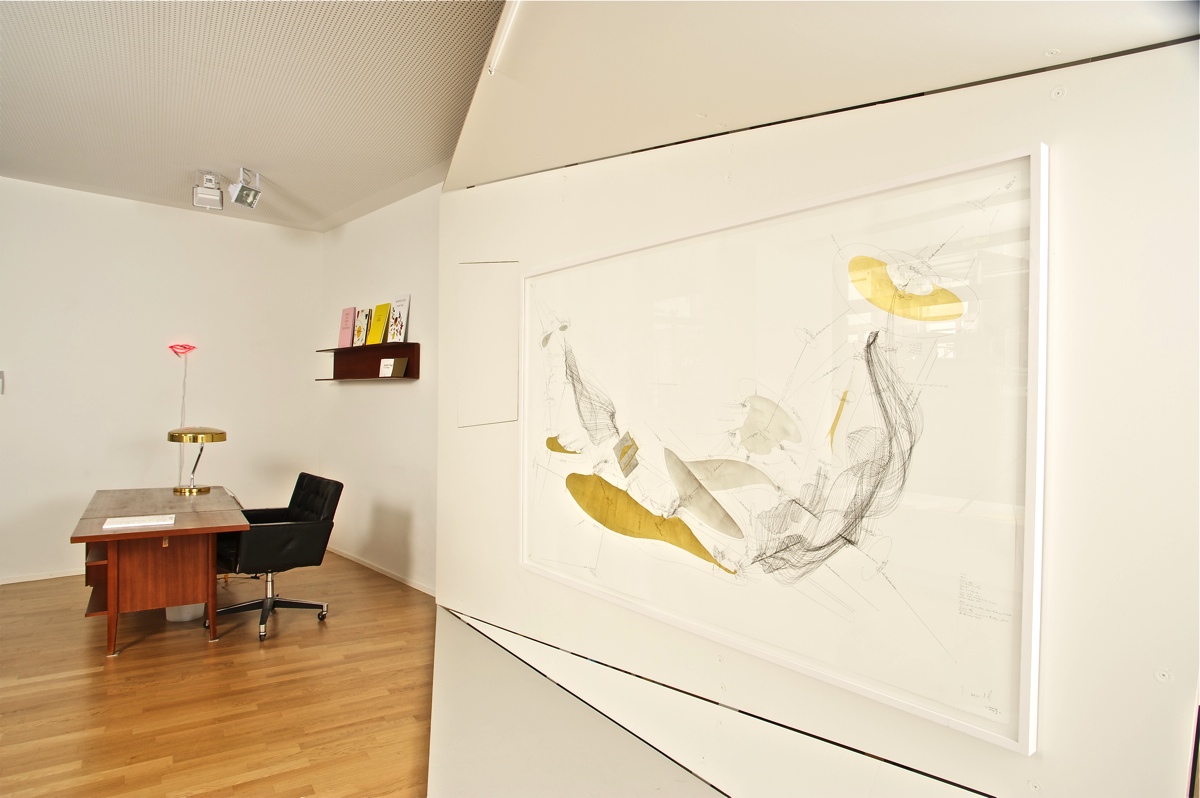-
| > More information about Jorinde Voigt |
Jorinde VoigtC. G. JungJune 7 – July 27, 2013 |
 |
Jorinde Voigt C. G. Jung June 7 – July 27, 2013 |
| Press Release English Pressetext Deutsch Opening hours: Wednesday – Friday 11h00 – 18h00 Saturday 11h00 – 17h00 and by prior arrangement
Grieder Contemporary is delighted to be hosting the first solo exhibition by Jorinde Voigt. The show consists of a new group of drawings inspired by the book „Memories, Dreams, Reflections of C.G. Jung“. The Swiss psychiatrist (1875–1961) was a contemporary of Sigmund Freud and the founder of Analytical Psychology. Jung's approach was based on the observation that our unconscious is shaped by collective symbols and primal images – so-called archetypes. In her drawings, Jorinde Voigt (born 1977) has developed a coded idiom capable of translating the phenomena of our world into visual compositions. No matter how complex the processes, they find a putative order in the artist's systems. Deploying networks of lines that are simultaneously chaotic and poetic, mathematical matrices and musical patterns, her works explore the mechanics of our perception and the factors that influence these occurrences. In C.G. Jung, Voigt lets the viewer participate in her process of textual appropriation. The artist condenses what she has read to create remarks and areas that become placeholders for her inner images. Each area in the drawing represents an item of text that triggered particular pictorial associations while she was reading it. Voigt outlines these imagined shapes on the paper, cuts them out and adorns them with yellow or white gold before replacing them in their original position. She combines this technique, which is not dissimilar to marquetry, with handwritten notation. Parameters such as "rotational speed", "orientation", "alignment of a new and old centre" and "egomotion" define the areas that reflect her subjective reading process within an objective navigation system she calls a "matrix". The gold she uses finds its counterpart in the immateriality of the psychological discourse. At the same time, the exuberance of this shimmering and self-reflecting precious metal contrasts with the rigour of her systematic approach. Within the framework of her constantly recurring matrix of lines there is variation in the modus operandi and mode of representation of the areas. Corresponding to Jung's reflections on adolescence, Voigt lets inexpressible forms pulsate in gold on the paper: "I had nightmares of things that were sometimes big, sometimes small. These included a small sphere far away that approached nearer and nearer, becoming something monstrous and overwhelming (...)". "What am I really doing? It is art" (...) "No, it is not. On the contrary, it is nature". Voigt takes extracts of text such as Jung's monologues with the "Anima" as an opportunity for defining sequences of figurative forms within her conceptualised "matrix". The artist's drawings are in direct relation to the thought processes triggered by her reading, processes that are inseparable from individual experiences and emotions, memories and knowledge. The neon works installed in the exhibition, which date from 2012, appear to represent a counterpole to the drawings; in reality, though, they are founded upon a similar principle. Voigt translates words from Roland Barthe's essay „A Lover's Discourse: Fragments“ (2004) in neon tubes, inscribed with the quotes and chapters used: these include "The raised arms of desire / Absence" and "Falling world / Alone". Imagined colours and shapes are visible as coloured light lines. The works of the artist, who lives in Berlin and who, in 2012, received the 5th Drawing Prize of the Guerlain Contemporary Art Foundation, are to be found in the collections of the Centre Pompidou, Paris; the Museum of Modern Art, New York; the Bundeskunstsammlung, Bonn; the Kupferstichkabinett, Berlin; the Kunsthaus Zürich; and the Staatliche Graphische Sammlung München. Her notations, scores, objects and installations have been exhibited at the Nevada Museum of Art; the Royal Ontario Museum, Toronto; the Museum van Bommel van Dam, Venlo: the Von der Heydt-Museum, Wuppertal; and the Gemeentemuseum Den Haag, The Hague. |